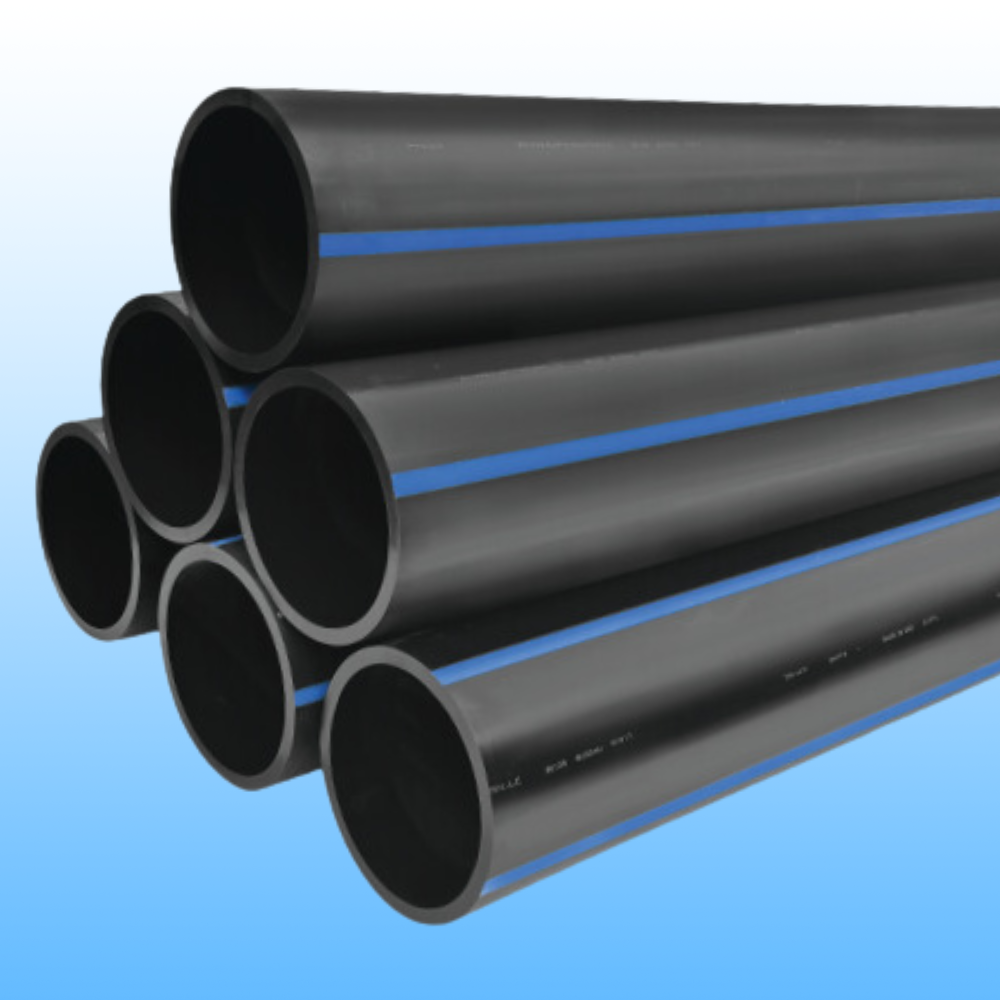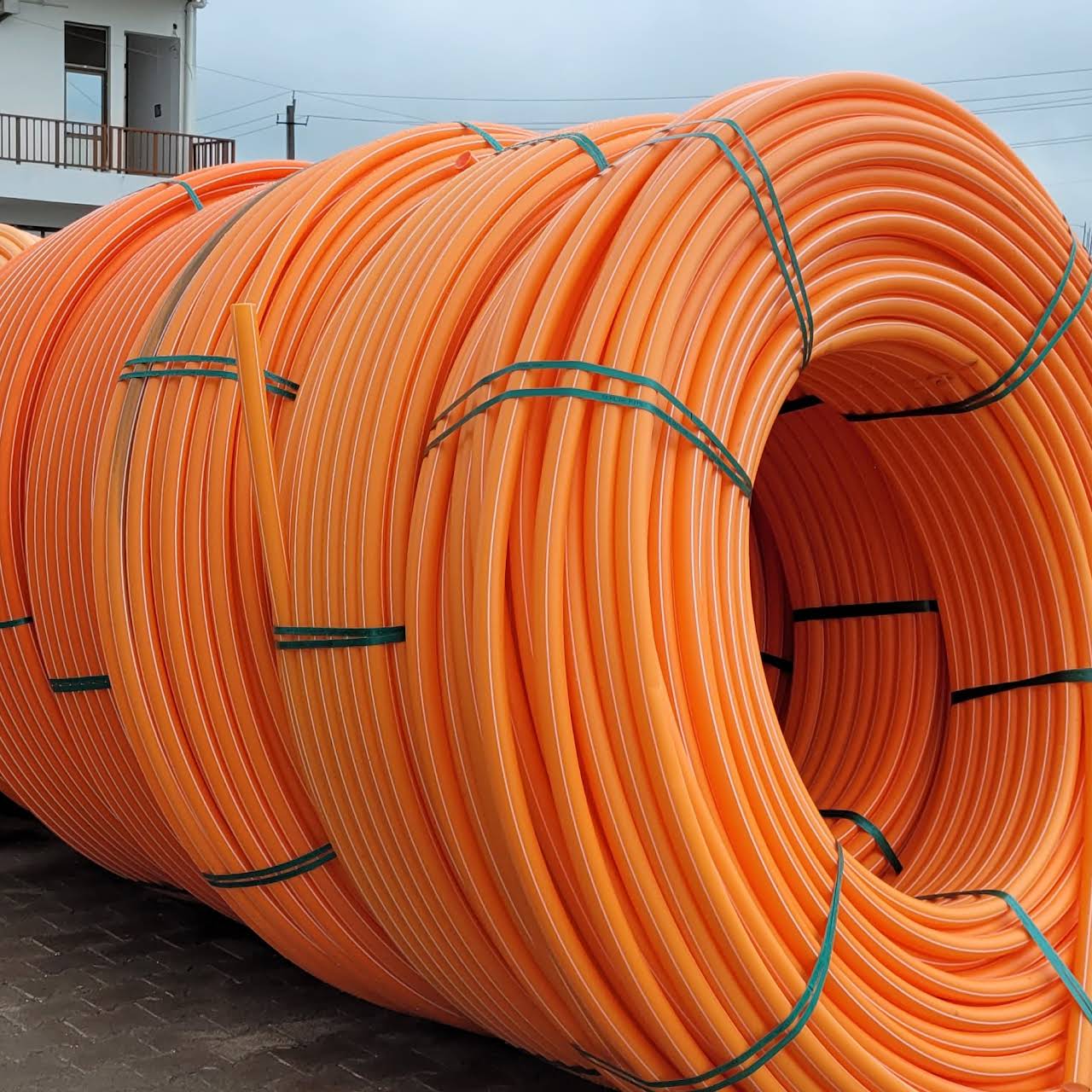Why Partnering with Pipe Supplier American Plastics Midland Ensures Quality Assurance
Wiki Article
Discover the Production Process Behind High-Quality HDPE Pipe and Its Applications
The production procedure of high-grade HDPE pipelines is detailed and methodical. It begins with the choice of raw materials that improve performance. Following this, ethylene undertakes polymerization to create resin, which is then formed with extrusion. Quality assurance is extremely important, making sure that the final item satisfies strict standards. The journey of HDPE pipes does not finish with production. Their applications throughout different industries disclose a broader importance worth taking a look at.Recognizing HDPE: Residences and Advantages

High-density polyethylene (HDPE) is a versatile thermoplastic known for its durability and resistance to numerous ecological factors. This product exhibits excellent tensile strength, making it appropriate for demanding applications. Its low-density framework contributes to a light-weight product, promoting ease of dealing with and installment. HDPE additionally showcases amazing resistance to chemicals, which lessens deterioration when revealed to extreme materials.
The material's reduced wetness absorption further boosts its long life, making it ideal for use in pipelines and storage tanks. Additionally, HDPE is resistant to ultraviolet (UV) radiation, making certain that items preserve their honesty also when subjected to sunlight. Its versatility allows for the creation of intricate forms without jeopardizing toughness. The environmentally friendly nature of HDPE, commonly originated from recycled products, contributes to its charm, advertising sustainable techniques in manufacturing. Generally, these residential or commercial properties and benefits make HDPE a favored choice for various commercial and customer applications.
Basic Material Choice for HDPE Production
The selection of basic materials for HDPE production is necessary to confirm the end product meets the desired requirements and high quality requirements. High-density polyethylene (HDPE) is largely generated from polymerized ethylene, stemmed from fossil gas such as gas or petroleum. The top quality of these feedstocks greatly influences the mechanical and thermal residential or commercial properties of the final HDPE.Additives additionally play a considerable role in improving HDPE's efficiency, including anti-oxidants, UV stabilizers, and colorants, which improve resilience and resistance to ecological aspects. The choice procedure need to take into consideration not just the chemical structure of the raw materials however likewise their handling attributes to guarantee reliable manufacturing.
The sourcing of raw products need to focus on sustainability and compliance with ecological regulations, as liable methods are essential in today's market. Ultimately, cautious basic material selection lays the foundation for creating high-quality HDPE pipes suitable for varied applications.
The Extrusion Process: Shaping HDPE Pipeline
The extrusion procedure plays a vital duty in shaping HDPE pipelines, starting with precise material prep work techniques that assure optimal circulation and consistency. Similarly vital is the style of the die, which directly affects the last dimensions and surface top quality of the pipeline. With each other, these elements add significantly to the efficiency and quality of HDPE pipe manufacturing.Product Prep Work Methods
Reliable manufacturing of HDPE pipelines begins with careful material preparation methods, specifically the extrusion process. During this phase, high-density polyethylene material is very first dried out to eliminate wetness, ensuring ideal circulation qualities. The material is then fed into the extruder, where it goes through heating and melting, transforming into a viscous state. This heating procedure is thoroughly managed to preserve the material's integrity and efficiency. The molten HDPE is forced through a die, shaping it right into a continual pipeline kind. Proper temperature level administration during extrusion is important, as it directly influences the material's residential properties and the final product quality. As soon as shaped, the HDPE pipe is cooled down and reduced to defined sizes, all set for subsequent handling and applications.Die Style Relevance
Precision in die style plays a necessary role in the extrusion process of HDPE pipelines. The die functions as the final shaping device, straight influencing the pipeline's measurements, wall density, and surface area finish. A well-designed die assurances consistent material circulation, decreasing issues such as irregularities and weak areas. The geometry of the die have to be enhanced to suit the particular properties of HDPE, including its thickness and thermal behavior throughout extrusion. Furthermore, the cooling rate of the material as it passes through the die can markedly impact the pipeline's structural stability. Spending in sophisticated die modern technology is vital for producers intending to create top quality HDPE pipes that satisfy sector requirements and consumer expectations.Quality Control Measures in HDPE Production
Different aspects affect the top quality of HDPE pipe manufacturing, efficient quality control actions are vital to guarantee consistency and reliability in the last item more info (Midland TX HDPE Pipe Fittings in Stock). Key quality control methods include rigorous material examination, confirming that the raw polyethylene fulfills established requirements for purity and thickness. During the extrusion procedure, parameters such as temperature, pressure, and cooling time are very closely kept an eye on to maintain dimensional precision and architectural honestyAdditionally, post-production screening is essential; manufacturers frequently perform hydrostatic tests to analyze the pipeline's strength and resistance to stress. Aesthetic examinations for surface area problems further boost quality control. Qualification from relevant requirements organizations, like ASTM or ISO, provides an additional layer of integrity. By carrying out these complete quality assurance measures, manufacturers can reduce defects, enhance efficiency, and make certain that the HDPE pipelines satisfy the specific requirements of numerous applications, eventually causing customer fulfillment and depend on in the product.
Applications of HDPE Pipe Throughout Industries
HDPE pipes are utilized throughout various sectors as a result of their durability and convenience. In water distribution systems, they guarantee reliable distribution, while in wastewater management, they supply dependable services for waste transportation. Furthermore, farming irrigation networks benefit from HDPE's resistance to rust and flexibility, making it a suitable selection for modern-day farming practices.
Water Distribution Systems
A significant variety of markets count on high-density polyethylene (HDPE) pipes for reliable water distribution systems. Understood for their sturdiness and resistance to rust, HDPE pipelines are extensively made use of in metropolitan water supply networks, farming irrigation, and commercial applications. Their lightweight nature assists in easy handling and setup, lowering labor expenses and time. Furthermore, HDPE pipes can fit different stress levels, making them ideal for both low and high-pressure systems. Texas hdpe pipe manufacturer. The versatility of the material allows for seamless combination into existing framework, lessening the need for considerable excavation. HDPE's resistance to chemical leaching assurances that the water delivered remains safe and clean, making it a perfect option for keeping the top quality of drinkable water throughout numerous industries.Wastewater Management Solutions
Reliable water distribution systems additionally lead the way for ingenious wastewater monitoring remedies, where high-density polyethylene (HDPE) pipelines play a considerable duty. Prominent for their resilience and resistance to corrosion, HDPE pipes are ideal for carrying wastewater in various setups. Their adaptability allows for very easy installation in complicated atmospheres, minimizing the demand for comprehensive excavation. Furthermore, HDPE's smooth interior surface area lowers friction, improving flow rates and efficiency. These pipelines are likewise immune to chemical leaching, making certain that impurities do not compromise the surrounding atmosphere. Industries, towns, and treatment facilities significantly rely on HDPE pipelines for their reliability and longevity, making them a preferred option for contemporary wastewater monitoring systems. This adaptability highlights the vital importance of HDPE pipes throughout countless applications.Agricultural Irrigation Networks
Agricultural watering networks profit significantly from the use of high-density polyethylene (HDPE) pipes, which give effective and dependable water distribution to crops. HDPE pipelines are light-weight, making them very easy to carry and install, while their adaptability enables numerous setups in diverse terrains. These pipelines demonstrate exceptional resistance to deterioration, chemicals, and UV radiation, ensuring resilience in rough agricultural settings. Furthermore, their smooth interior surface area reduces friction loss, enhancing water circulation and lowering energy prices connected with pumping. The longevity of HDPE pipelines, commonly surpassing 50 years, adds to decrease maintenance and replacement costs. Farmers significantly count on HDPE pipes to improve watering effectiveness and promote lasting farming methods, inevitably leading to enhanced crop returns and source conservation.
Future Fads in HDPE Pipe Technology
As the demand for lasting and effective infrastructure expands, developments in HDPE pipeline modern technology are positioned to change different markets. Arising fads consist of the assimilation of wise innovations, such as sensing units and IoT abilities, which facilitate real-time surveillance of pipe conditions, reducing upkeep costs and stopping leakages. Furthermore, the advancement of advanced manufacturing strategies, such as 3D printing, is enabling the production of facility, customized pipe designs that deal with certain project requirements.Moreover, the focus on recycling and round economic climate methods is driving the technology of HDPE pipelines made from recycled materials, enhancing sustainability. Boosted jointing approaches, such as electro-fusion and mechanical installations, are likewise improving installation efficiency and integrity. The expanding emphasis on ecological guidelines is pushing manufacturers to take on greener production processes, ensuring that HDPE pipelines not only meet sector criteria yet likewise foster an even more sustainable future for facilities advancement.
Frequently Asked Inquiries
Exactly How Does HDPE Compare to Various Other Plastic Materials?
HDPE outmatches numerous various other plastic products concerning toughness, chemical resistance, and adaptability. Its reduced density and high tensile stamina make it optimal for different applications, commonly exceeding choices in both efficiency and durability.What Are the Environmental Effects of HDPE Production?
The ecological effects of HDPE manufacturing consist of greenhouse gas exhausts, energy intake, and potential contamination from producing procedures. Additionally, incorrect disposal can bring about soil and water contamination, increasing concerns about long-lasting ecological impacts.Can HDPE Pipeline Be Recycled?
Yes, HDPE pipelines can be recycled. Lots of centers approve used HDPE for handling, changing it right into brand-new items. This recycling adds to sustainability initiatives, reducing plastic waste while saving resources and power in the manufacturing cycle.What Is the Lifespan of HDPE Piping?

Just How Do Temperature Variations Affect HDPE Pipe Efficiency?
Temperature level variations greatly affect HDPE pipe efficiency, affecting versatility and strength. High temperature levels can result in softening, while reduced temperatures might trigger brittleness, inevitably influencing the pipe's durability and viability for different applications in diverse environments.Report this wiki page